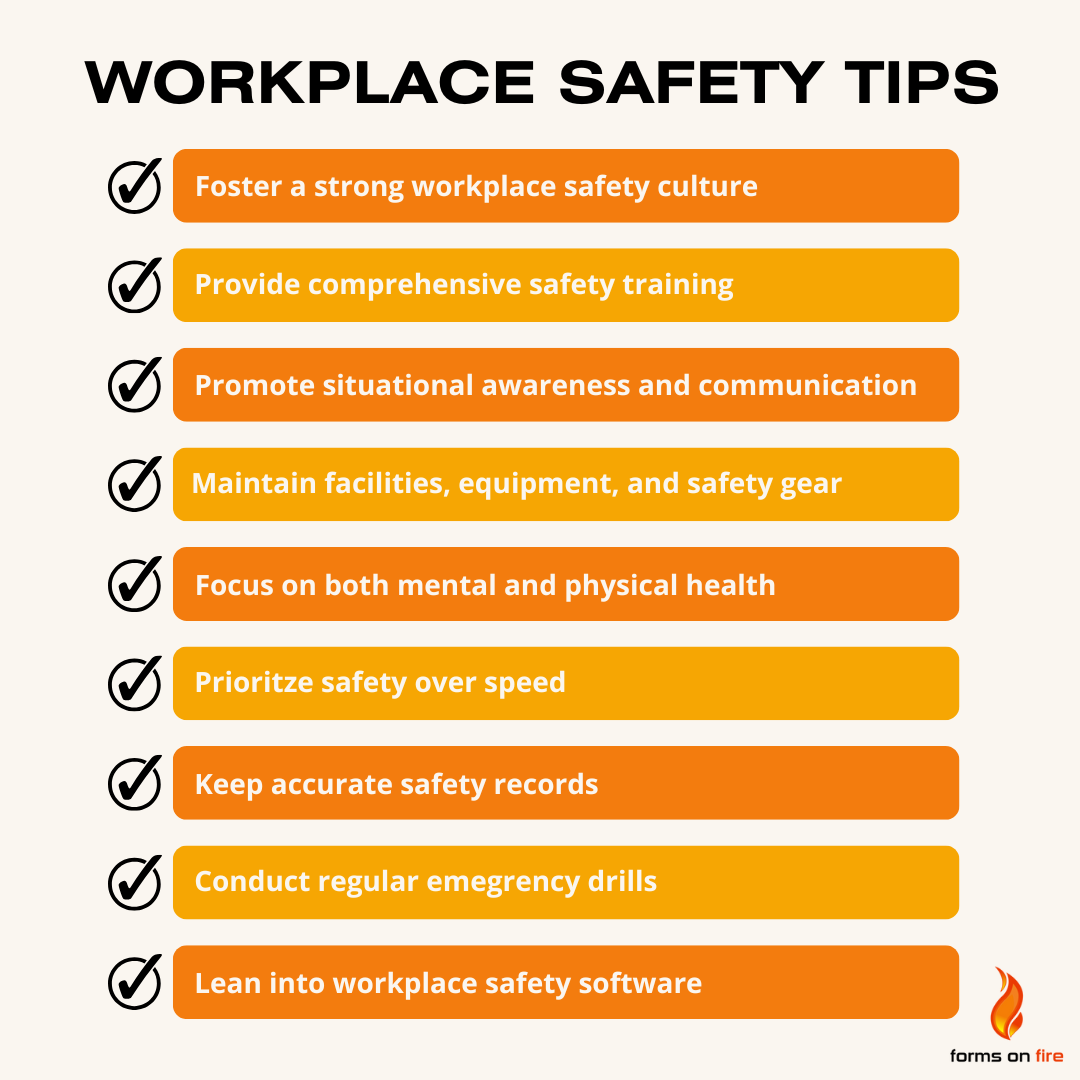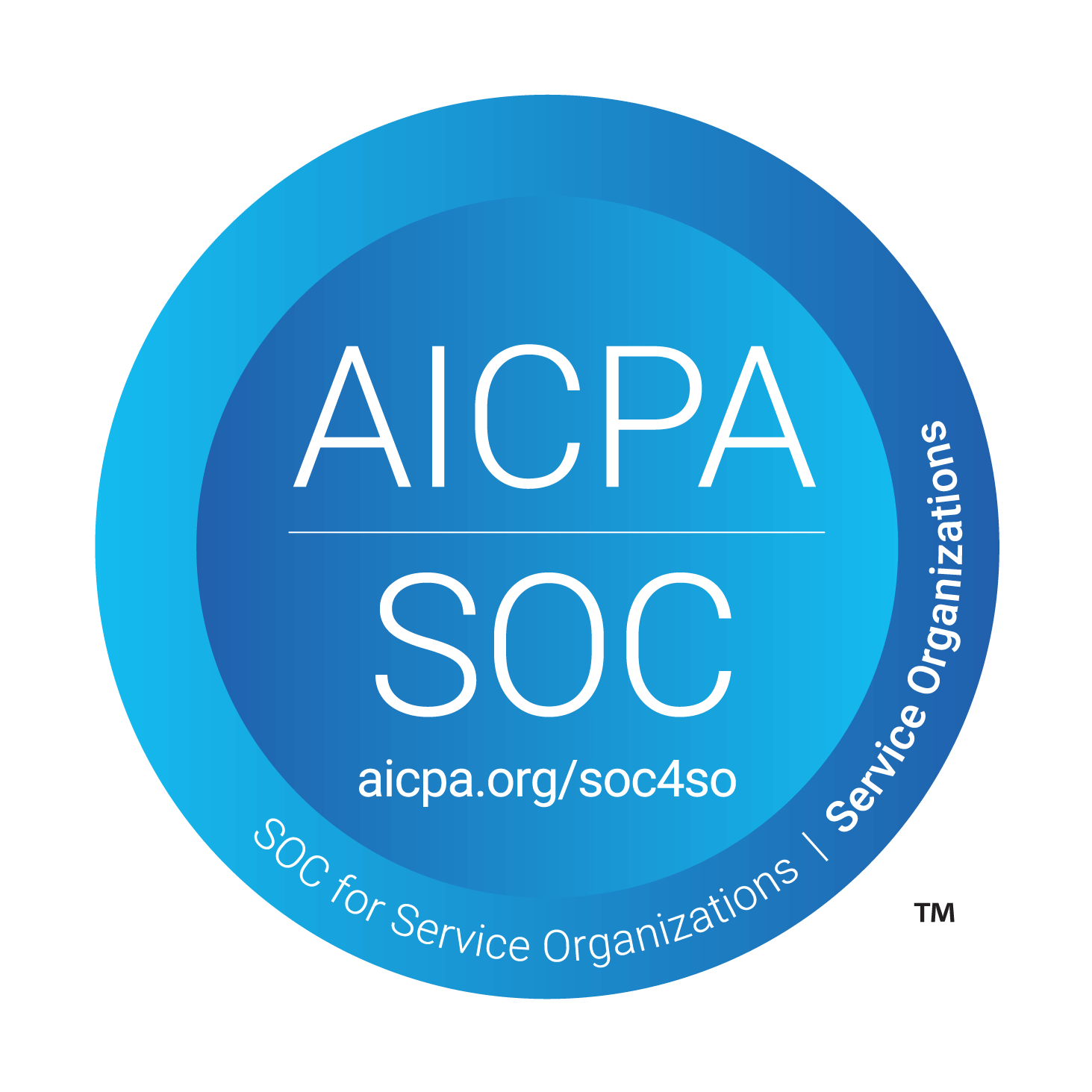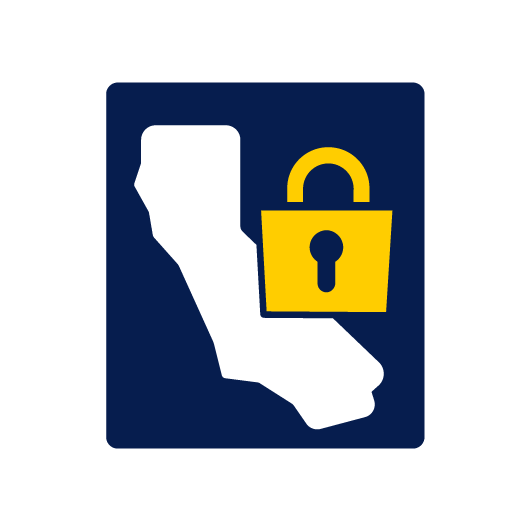9 Workplace Safety Tips to Protect Your Employees
Your employees are counting on you to keep them safe. They want to know that when they clock in and put their best foot forward, your workplace safety measures will catch them if they fall. Workplace safety is a continuous commitment central to your employees’ well-being, operational efficiency, and the success of your business.
In this blog, we’re covering 9 workplace safety tips that will help you protect your employees from accidents, increase productivity, and create a culture of trust and responsibility within your organization.

1. Foster a Strong Workplace Safety Culture
Workplace safety impacts every employee, from bottom to top. Environment, health, and safety (EHS) teams may carry the brunt of the responsibility, but the safest work environments establish a strong safety culture to go the extra mile.
The term “safety culture” refers to a set of foundational principles that embody how employees at every level of your organization treat workplace safety. Building a strong workplace safety culture influences every employee to take accountability for their part in maintaining a safe, productive work environment.
Start building your safety culture from the top down. Leaders will set the tone by emphasizing the importance of safety in daily operations and decision-making. Next, have them empower employees to report hazards and near-misses without fear of repercussions. Stress the importance of open communication and an ongoing dialogue on safety concerns. Lastly, foster a sense of shared responsibility by recognizing the employees who demonstrate proactive safety behaviors.
Managers can also create a safety committee with representatives from every department. The group can meet regularly to continue the dialogue on safety concerns, suggest improvements, and act as a liaison between employees and management. Since this type of committee unites employees from all departments, it’s especially helpful in fostering a strong workplace safety culture.
2. Provide Comprehensive Workplace Safety Training
Accidents may be inevitable, but preventative safety training goes a long way in reducing their frequency and severity. Proper employee safety training should be a critical component of workplace safety at your organization. Be sure that all employees receive introductory safety training when they are first hired and periodic refresher courses to keep the information top of mind.
Employee safety training should be role-specific. Each employee should know what hazards are related to their specific work environment and tasks. The employee safety courses should also include emergency response procedures, first aid, and instructions on how to operate any and all equipment they may encounter in their role.
The most impactful approach to safety training combines theoretical knowledge and hands-on practice. This blended training ensures that employees understand safety protocols and can apply them when the time comes.
The more consistent you are with your employee safety training, the more prepared your employees will be when the inevitable accident occurs. Consider having human resources (HR) maintain a record of all training sessions and notify employees when they may be due for a refresher course.
Additionally, be sure to update your training materials to reflect any changes in company practices, work environment, or safety regulations.
3. Promote Situational Awareness and Communication
Situational awareness is key to stopping an accident in its tracks. Employees with strong situational awareness constantly assess their surroundings and check for potential hazards before they become accidents. With enough practice, this habit becomes second nature like defensive driving.
Teach your employees to approach every day of work with this mindset and report anything that seems off. Employees who stay mindful of their environment are less likely to be injured. Incorporating visual reminders like posters and digital displays can reinforce the importance of staying vigilant throughout the workday.
Encourage your team to communicate potential hazards using predetermined channels. When a hazard is identified, mark it and make sure all workers, including temporary workers, are aware of the safety procedures related to these hazards. To streamline this process, consider creating a hazard reporting system so that employees can easily and quickly flag potential risks.
4. Maintain Facilities, Equipment, and Safety Gear
Routine maintenance is a building block of workplace safety. It might seem simple, but keeping your facilities, equipment, and safety gear properly maintained is one of the most high-yield ways to lower the risk of workplace accidents. In fact, faulty machinery and poor facility maintenance are two of the most commonly reported hazards.
Keep your employees safe by establishing a schedule for the regular inspection and repair of equipment, tools, and workplace infrastructure. Be sure to assign maintenance tasks to specific employees and outline a clear process for reporting equipment malfunctions.
It’s also crucial that your employees have the right personal protective equipment for their specific tasks. Regularly inspect PPE to ensure it fits properly and is well-maintained.
Don’t forget that adequate facility maintenance necessitates a clean, organized workspace. A cluttered workspace quickly becomes a breeding ground for accidents. If you aren’t storing materials, tools, and equipment according to protocol, reports of slips, trips, and falls are imminent. Implement a “clean as you go” policy to help employees keep their workspaces organized throughout their shifts. Additionally, make sure everyone keeps an eye on the emergency exits so they are always clear and accessible.
5. Focus on Both Mental and Physical Health
Protecting your employees’ health from harm at work doesn’t stop at preventing physical accidents. Mental health and posture are crucial elements of maintaining a safe work environment. When employees face high levels of stress, burnout, and fatigue, they may experience impaired judgment that can lead to mistakes and accidents. Help your employees prioritize their mental health by encouraging regular breaks, fostering a positive work-life balance, and offering resources for stress management.
Poor posture is also dangerous. Small, repetitive actions can lead to long-term musculoskeletal disorders. You can safeguard your employees from these injuries by educating your team on proper ergonomics, including lifting techniques and stretching exercises. Consider investing in equipment that promotes proper posture and reduces strain like ergonomic chairs, adjustable desks, and anti-fatigue. Additionally, you can offer ergonomic assessments that help employees identify their risk factors and adjust their workstations accordingly.
6. Prioritize Safety Over Speed
It’s easy to fall into the trap of prioritizing speed over safety with tight deadlines hanging over your head. However, the mistakes and accidents that result from rushing through tasks far outweigh the benefits. For the sake of both employee safety and efficiency, make sure your team understands they should never compromise safety for the sake of speed. Remind your employees to take their time and adhere to all protocols, even when facing an urgent deadline. You can reinforce this lesson by offering examples of times when shortcuts resulted in longer delays, whereas prioritizing safety saved time and money in the long run.
7. Keep Accurate Safety Records
Detailed safety records are a legal requirement for a reason– they play a critical role in improving workplace safety. Keeping track of incidents, near-misses, training records, and safety audits helps identify patterns and opportunities for improvement. These records also keep your company compliant with occupational safety regulations. To get the most out of your safety records, review them with your team on a regular basis to highlight areas of concern and adjust your safety protocols accordingly.
8. Conduct Regular Emergency Drills
Emergencies are inevitable, even if you follow every tip on this list. Your best line of defense when crisis strikes is your well-prepared emergency plan. You never know when there will be a fire, medical emergency, or natural disaster. This is why conducting consistent, serious emergency drills is so vital. Your team needs to know how to take action in the case of an emergency. Use your drills to teach employees about evacuation procedures, emergency equipment, and how to call for help.
When the drill is complete, have your team discuss what went well and what could have gone better. This promotes continuous learning, reinforces memory, and helps foster a culture of workplace safety.
9. Lean into Workplace Safety Software
Forms on Fire’s customizable templates for incident reporting, safety inspections, and risk assessments simplify the process of data collection and documentation. Create a custom app your employees can use to report hazards, record safety audits, and track corrective actions on the job– even without internet access.
When safety information is recorded in a standardized format in real-time, it is more accurate, up-to-date, and accessible. This is one way digitizing safety processes leads to faster potential incident response times. And since a well-integrated digital workplace safety system drastically improves communication and accountability across your entire organization, it can be foundational to your workplace safety culture.
Next Steps
Follow these workplace safety tips, and you’ll be well on your way to creating a safer, more productive work environment. The benefits don’t stop at protecting your employees– they also safeguard your business from accidents, fines, and operational downtime. When your safety culture becomes second nature, your entire organization will thrive.
Ready to test out Forms on Fire’s workplace safety software? Start browsing templates and building your custom app with a
free trial today!




